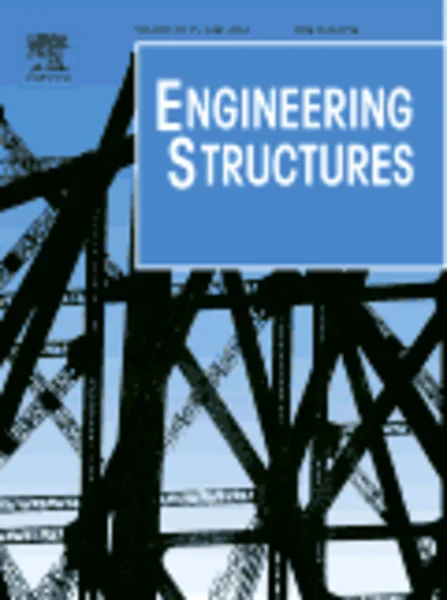-
ductility aspects of reinforced and non-reinforced timber joints
جزئیات بیشتر مقاله- تاریخ ارائه: 1392/07/24
- تاریخ انتشار در تی پی بین: 1392/07/24
- تعداد بازدید: 830
- تعداد پرسش و پاسخ ها: 0
- شماره تماس دبیرخانه رویداد: -
even though brittle failure modes in timber joints may be avoided by the proper design of the connection, the use of minimum timber dimensions and minimum spacing and distances of fasteners often leads to timber splitting in the connection area. due to the highly nonlinear behaviour of timber loaded in compression as well as the steel used for mechanical fasteners, timber joints can behave in a rather ductile manner. ductile behaviour is preferable in timber structures.technical innovations regarding engineered wood products as well as fastener and steel technology led to the development of high-performance timber connections. in these high-performance connections, brittle failure modes are prevented by reinforcing the timber in the connection area perpendicular to the grain or using cross-laminated timber members. the improvement of the ductility levels is shown based on several experimental studies comparing non-reinforced to reinforced connections.
مقالات جدیدترین رویدادها
-
استفاده از تحلیل اهمیت-عملکرد در ارائه الگوی مدیریت خلاقیت سازمانی و ارائه راهکار جهت بهبود
-
بررسی تاثیر ارزش وجوه نقد مازاد بر ساختار سرمایه شرکت های پذیرفته شده در بورس اوراق بهادار تهران
-
بررسی تأثیر سطح افشای ریسک بر قرارداد بدهی شرکت های پذیرفته شده در بورس اوراق بهادار تهران
-
بررسی تأثیر رتبه بندی اعتباری مبتنی بر مدل امتیاز بازار نوظهور بر نقد شوندگی سهام با تأکید بر خصوصی سازی شرکت ها
-
تأثیر آمیخته بازاریابی پوشاک ایرانی بر تصویر ذهنی مشتری پوشاک ایرانی (هاکوپیان)
-
تحلیل پوش آور مخازن بتنی زمینی و تعیین ضریب رفتار ناشی از شکل پذیری
-
توسعه شهری پایدار از ایده تا اجرا
-
تحلیل و بررسی علل بالا بودن تعداد متوفیات و تصادفات در مهرماه در استان آذربایجان غربی و راهکارهای کاهش آن
-
کاربرد مدل سازی اطلاعات ساختمان (bim) در گودبرداری
-
a new methodology for numerical simulation of geothermal down-hole heat exchangers
مقالات جدیدترین ژورنال ها
-
مدیریت و بررسی افسردگی دانش آموزان دختر مقطع متوسطه دوم در دروان کرونا در شهرستان دزفول
-
مدیریت و بررسی خرد سیاسی در اندیشه ی فردوسی در ادب ایران
-
واکاوی و مدیریت توصیفی قلمدان(جاکلیدی)ضریح در موزه آستان قدس رضوی
-
بررسی تاثیر خلاقیت، دانش و انگیزه کارکنان بر پیشنهادات نوآورانه کارکنان ( مورد مطالعه: هتل های 3 و 4 ستاره استان کرمان)
-
بررسی تاثیر کیفیت سیستم های اطلاعاتی بر تصمیم گیری موفق در شرکتهای تولیدی استان اصفهان (مورد مطالعه: مدیران شرکتهای تولیدی استان اصفهان)
-
چسبندگی هزینه، تمرکز مالکیت و ناکارایی سرمایه گذاری در شرکت های پذیرفته شده در بورس اوراق بهادار تهران
-
ارزیابی فاکتورهای مالون دی آلدئید، 8ایزو پروستاگلاندین f2α 8 ، هیدروکسی داکسی گوانوزین و گروه های پروتئین کربونیل به عنوان شاخص های استرس اکسیداتیو در افراد روزه دار در شهر تهران
-
بررسی میزان و نوع رابطه فرهنگ رشته ای با میزان پایبندی به ارزش های اخلاقی علمی در بین دانشجویان (موردمطالعه: دانشجویان دانشگاه ایلام)
-
قاچاق انسان در نظام کیفری جمهوری اسلامی ایران
-
بررسی عوامل اجتماعی موثر بر نگرش دانشجویان به فعالیت های سیاسی در دانشگاه اسلامی واحد بندرعباس




سوال خود را در مورد این مقاله مطرح نمایید :